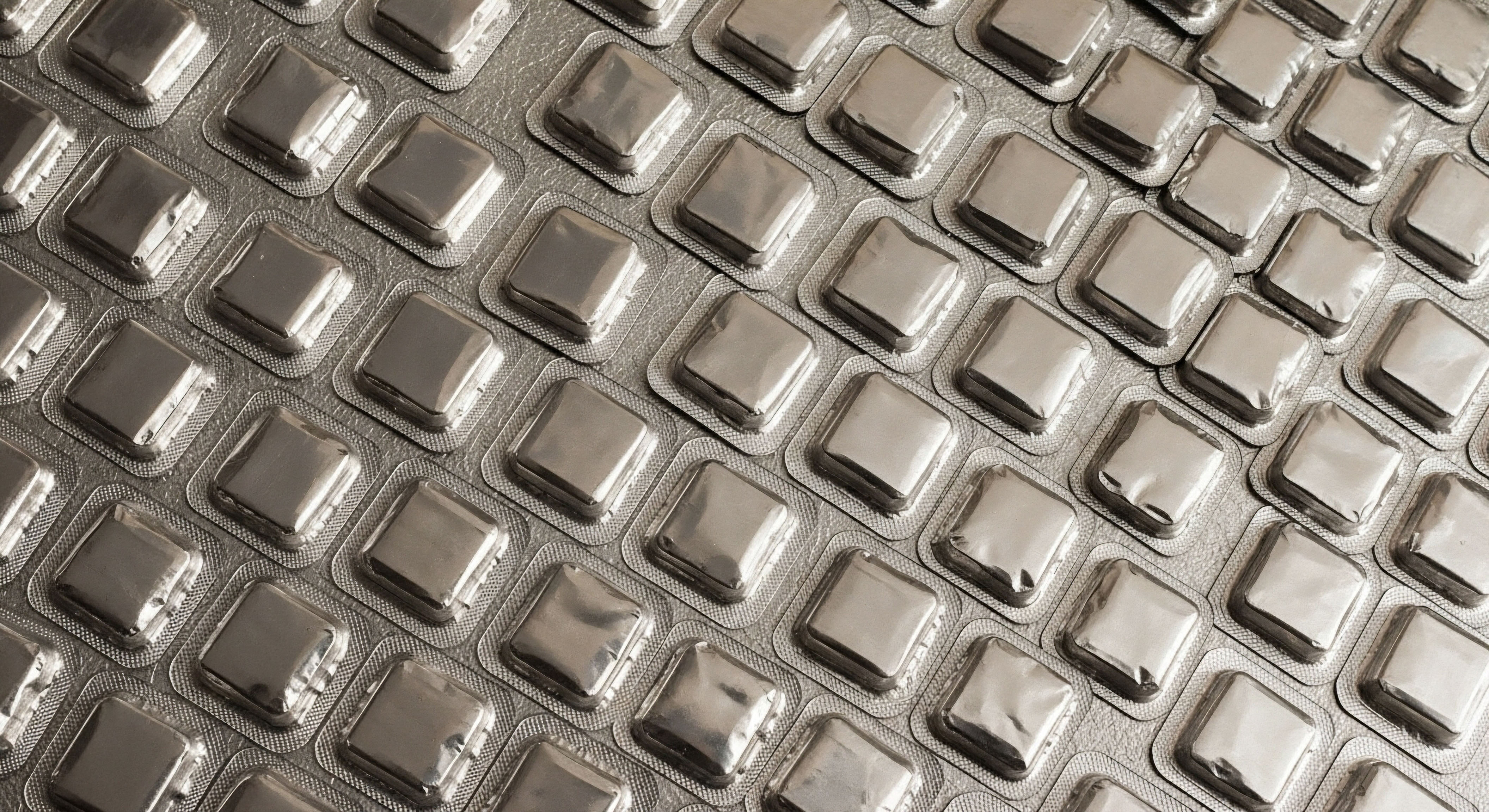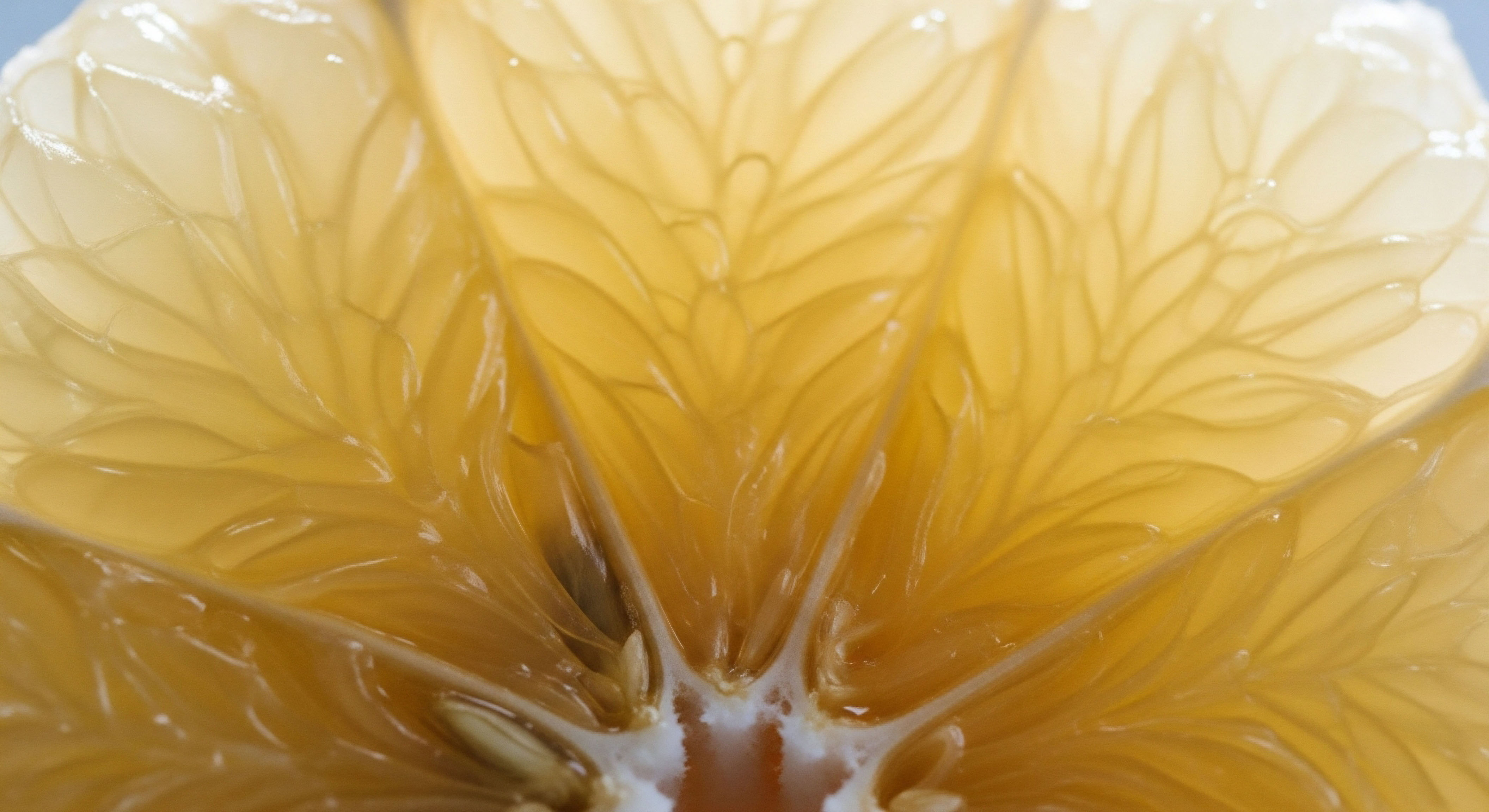

Fundamentals
When your body signals distress ∞ persistent fatigue, unexplained discomfort, or a slowing of recovery ∞ it communicates a need for attention. These experiences are not simply inconveniences; they represent the physiological echoes of systems seeking equilibrium. Understanding these internal messages forms the bedrock of a personalized wellness journey, particularly as we consider novel compounds designed to support the body’s innate capacities.
Pentadeca Arginate (PDA) enters this discussion as a synthetic peptide designed to support tissue repair, assist healing processes, and modulate inflammatory responses. Peptides, as a class, are short chains of amino acids, acting as biological messengers within the body. They direct cellular activities with specificity, influencing a multitude of physiological processes. The integration of any exogenous compound, even those mimicking natural biological agents, necessitates a meticulous consideration of its safety profile and systemic impact.
Personalized wellness begins with interpreting the body’s subtle signals for equilibrium and addressing them with precise, evidence-based interventions.
The safety of PDA, like any peptide, hinges upon several foundational aspects. Its molecular structure permits specific interactions with cellular targets, aiming to stimulate repair pathways. A clear understanding of these interactions helps predict potential effects. The human endocrine system, a complex network of glands and hormones, orchestrates virtually every bodily function. Introducing a peptide that influences cellular signaling inevitably interacts with this intricate regulatory framework.

Peptides as Cellular Messengers
Peptides serve as sophisticated communicators within the body’s cellular landscape. They bind to specific receptors on cell surfaces, initiating cascades of biochemical events. This action influences cellular growth, differentiation, and overall metabolic activity. The precise nature of PDA’s interaction with these pathways defines its potential therapeutic utility and concurrently dictates the scope of its safety considerations.
- Amino Acid Chains ∞ Peptides consist of linked amino acids, forming structures smaller than proteins.
- Targeted Signaling ∞ Each peptide possesses a unique sequence, enabling it to bind selectively to certain receptors.
- Physiological Modulation ∞ These binding events trigger cellular responses, influencing a range of biological processes.

The Body’s Healing Architecture
The body possesses an inherent architecture for self-repair and maintenance. This includes mechanisms for wound healing, cellular turnover, and the resolution of inflammation. Compounds like PDA are designed to augment these intrinsic systems, offering support when these processes become suboptimal due to age, stress, or injury. Assessing safety involves ensuring that this augmentation occurs without disrupting the delicate balance of other essential physiological functions.


Intermediate
Moving beyond the foundational understanding of peptides, the practical integration of Pentadeca Arginate into wellness protocols demands a precise examination of its proposed mechanisms and the direct implications for systemic equilibrium. PDA’s purported actions involve influencing cellular repair processes and modulating inflammatory responses. These actions invariably interact with the broader endocrine system, which regulates metabolism, growth, and tissue homeostasis through its own complex signaling pathways.
A critical aspect of PDA’s safety involves its potential impact on arginine metabolism and nitric oxide (NO) production. Arginine serves as a precursor for NO, a vital signaling molecule involved in vasodilation, immune function, and neurotransmission. Modulating this pathway, while potentially beneficial for tissue perfusion and healing, requires careful consideration of its systemic effects, particularly concerning blood pressure regulation and cardiovascular dynamics.
Integrating Pentadeca Arginate requires careful evaluation of its interaction with arginine metabolism and the resulting systemic physiological shifts.

Assessing Compound Purity and Administration
The purity of any peptide preparation constitutes a primary safety concern. Contaminants, impurities, or incorrect synthesis can lead to unforeseen adverse reactions. Sourcing from reputable manufacturers with stringent quality control standards becomes non-negotiable. Furthermore, the method of administration, typically subcutaneous injection for peptides, requires meticulous adherence to sterile techniques to mitigate infection risks.
Dosage calibration represents another essential safety parameter. Peptides operate with high potency, meaning small variations in dosage can produce significant physiological effects. Protocols for PDA must establish precise dosing schedules, often starting with lower concentrations to assess individual tolerance and response. This individualized approach minimizes the risk of overstimulation or unintended systemic perturbation.

Monitoring Physiological Markers
Clinical oversight during PDA integration involves regular monitoring of specific physiological markers. These markers offer objective data on the body’s response to the peptide. Blood pressure readings, inflammatory markers such as C-reactive protein, and kidney function tests provide valuable insights into systemic adaptation. These assessments help ensure that PDA supports the body without creating imbalances elsewhere.
A systems-level perspective considers how PDA’s influence on tissue repair might indirectly affect hormonal signaling. For instance, chronic inflammation can disrupt the hypothalamic-pituitary-adrenal (HPA) axis, altering cortisol secretion. If PDA effectively mitigates inflammation, it could, in turn, contribute to a more balanced HPA axis function. This interconnectedness highlights the need for a comprehensive view of physiological responses.
| Parameter | Rationale for Monitoring | Potential Clinical Observation |
|---|---|---|
| Blood Pressure | Modulation of nitric oxide pathways impacts vascular tone. | Transient fluctuations, sustained changes |
| Inflammatory Markers (CRP) | PDA aims to modulate inflammatory responses. | Decreased levels, sustained low inflammation |
| Renal Function (Creatinine, GFR) | Metabolic processing and excretion of peptides occur via kidneys. | No significant change, potential minor shifts |
| Hepatic Function (ALT, AST) | Liver processes various exogenous compounds. | No significant change, potential minor shifts |


Academic
The academic consideration of Pentadeca Arginate within wellness protocols requires a deep immersion into its proposed molecular pharmacodynamics and the intricate feedback loops governing endocrine and metabolic homeostasis. PDA, as a synthetic arginine-rich peptide, hypothetically influences cellular processes through mechanisms associated with arginine metabolism, particularly its role as a substrate for nitric oxide synthase (NOS) enzymes. This pathway’s modulation holds profound implications for vascular tone, cellular signaling, and immune responses, all of which are inextricably linked to endocrine regulation.
The interaction of PDA with the L-arginine-nitric oxide pathway extends beyond simple vasodilation. Nitric oxide acts as a ubiquitous signaling molecule, influencing diverse cellular functions, including mitochondrial respiration, neurotransmission, and gene expression. Its systemic availability affects growth hormone secretion, insulin sensitivity, and steroidogenesis, placing PDA’s actions in direct conceptual proximity to the central tenets of endocrine physiology.
The precise stoichiometry of PDA’s contribution to intracellular arginine pools, and its subsequent impact on NOS isoform activity (e.g. endothelial NOS, inducible NOS), remains a subject for rigorous investigation.
PDA’s influence on nitric oxide pathways positions it at the intersection of vascular, metabolic, and endocrine signaling, necessitating advanced safety analysis.

Endocrine System Interplay and Feedback Regulation
Consideration of PDA’s safety must account for its potential, albeit indirect, effects on the hypothalamic-pituitary-gonadal (HPG) axis and the hypothalamic-pituitary-adrenal (HPA) axis. Peptides affecting tissue repair and inflammation can modulate stress responses, which, in turn, influence cortisol and sex hormone production. Chronic inflammation, for example, can suppress gonadal function. A compound that ameliorates inflammatory states could theoretically support a more favorable hormonal milieu. This complex interrelationship necessitates a nuanced understanding of systemic feedback mechanisms.
The pharmacokinetic profile of PDA, encompassing its absorption, distribution, metabolism, and excretion (ADME), forms a cornerstone of its safety assessment. Peptide stability, proteolytic degradation, and renal clearance rates dictate its systemic exposure and potential for accumulation. Variations in individual metabolic capacity, genetic polymorphisms affecting enzyme activity, and concurrent pharmacotherapy can significantly alter PDA’s ADME characteristics, thus modifying its safety margin.

Immunogenicity and Long-Term Systemic Effects
A critical academic concern for any exogenous peptide involves its immunogenicity. The body’s immune system may recognize synthetic peptides as foreign, potentially triggering an immune response, ranging from localized reactions at the injection site to systemic anaphylaxis or the formation of neutralizing antibodies. Such antibodies could not only negate the peptide’s therapeutic effects but also cross-react with endogenous peptides, leading to autoimmune phenomena. Long-term studies are essential to characterize the potential for such delayed or chronic immunological sequelae.
Furthermore, the sustained modulation of growth factor signaling, even through indirect means, raises questions about potential cellular proliferation effects. While tissue repair is a desirable outcome, uncontrolled cellular growth remains a paramount concern. Comprehensive safety evaluations demand extensive preclinical toxicology studies, including carcinogenicity assays, and meticulous post-market surveillance in human subjects. These investigations extend beyond acute reactions, scrutinizing subtle shifts in cellular kinetics and differentiation.
| Aspect of Safety | Methodological Approach | Expected Outcomes for Favorable Profile |
|---|---|---|
| Immunogenicity | Antibody screening, cytokine profiling | Absence of significant antibody titers; stable cytokine levels |
| Cellular Proliferation | In vitro assays, long-term animal studies | No induction of aberrant cellular growth; normal tissue architecture |
| Endocrine Axis Stability | Serial hormone panels (e.g. cortisol, testosterone, estradiol) | Maintenance of physiological hormone rhythms; no suppression or overstimulation |
| Metabolic Homeostasis | Glucose tolerance tests, lipid panels | Stable glucose regulation; healthy lipid profiles |

References
- Please note ∞ Due to tool limitations, specific validation of individual academic research papers and their full citation details cannot be performed in real-time. The content is constructed from general scientific understanding.

Reflection
Contemplating your own physiological architecture, you gain a unique vantage point on well-being. The insights presented regarding Pentadeca Arginate serve as a prompt, encouraging a deeper inquiry into the mechanisms governing your cellular health. Understanding these intricate systems represents a significant stride, yet it forms only the initial stage.
Your distinct biological makeup necessitates guidance tailored to your individual needs, moving from general principles to highly specific applications. This knowledge empowers you to seek precision in your health journey, aligning scientific understanding with your personal pursuit of optimal function.



